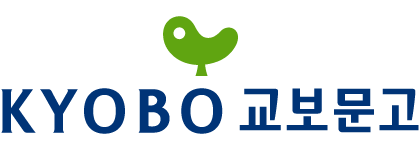한글서예(Hangeul Calligraphy) (Written by Gotdeul Lee Mi-Kyeong)
이미경 | 학원문화사
15,300원 | 20241201 | 9788919205976
Hangeul Calligraphy
Hangeul, the Korean alphabet, is a unique writing system in the world. It was created in 1443 by King Sejong of the Joseon dynasty (1392 - 1910), who invented and decreed the use of this new alphabet system. Hangeul was distinctly suited as a record of the Korean language as it was designed to perfectly represent the phonetic sounds of spoken speech. Nevertheless, its use was overshadowed by Hanmun, the Chinese character system, which had been the dominant official script for thousands of years. Thus, for hundreds of years Hangeul was primarily utilized by women, particularly royal and noble court members, who used it to record their lives and in their daily correspondence. As a result, the art of Hangeul calligraphy was developed by these pioneering court ladies, who invented its original style of writing with brush and Asian black ink. This classic style of Hangeul calligraphy is called ‘Gungche’ (palatial style).
The principles of Gungche calligraphy were researched and taught by two prominent women artists in South Korea. Galmul Lee Cheol-Kyeong (1914 - 1989) and her younger sister Gotdeul Lee Mi-Kyeong (1918 - 2022) were educated in Hangeul calligraphy from early childhood by their father Lee Man-Gyu, a Hangeul scholar and patriotic educator during the Japanese occupation of Korean peninsula (1910 - 1945). Afterwards, they established the Galmul Hangeul Calligraphy Association (1958) and helped promote Hangeul calligraphy as an official subject in the national school curriculum. They also instructed and mentored numerous professional calligraphy artists. In particular, the publication of a Gungche calligraphy textbook written by Lee Mi-Kyeong (1982) was instrumental in expediting the nationwide propagation of this traditional Korean art.
The recent advent of globalization in the 21st century has attracted a worldwide interest in Korean language and culture. Thus, the need for basic instruction textbooks of Hangeul calligraphy in foreign languages has also been widely recognized. Therefore, the English translation of Gotdeul’s original Hangeul Calligraphy textbook is the first step in an effort to meet such need. Though belated, I hope this book will be used by people around the world who cherish and enjoy the beauty of Hangeul.
Traditionally, Hangeul has been written from top to bottom and right to left. Hanmun (Chinese script) has also been written in the same way for thousands of years. Top to bottom and right to left is the natural writing orientation in calligraphy as it follows the easy flow of brushstrokes. The original publication ‘Hangeul Calligraphy written by Gotdeul Lee Mi-Kyeong’ (1982) also adopted the same structure. Although this version chose to adopt left to right writing as default, illustrations and examples of calligraphic works from the original publication are kept as they are. Throughout this book, unique Hangeul words and concepts are introduced into English using the Revised Romanization of Korean, the current official system of spelling Korean into foreign languages (with a few exceptions due to conventions).
To translate the original text, this book attempts to use common English words as much as possible. However, readers are advised to pay attention to the meaning and usage of a few words. First, the word ‘stroke’ is used to indicate a wide range of calligraphic brushwork. However, hoek, the Korean word for stroke, is also used interchangeably as it is the core word in the original textbook and represents the soul of Hangeul calligraphy in general. Also, hoek is often conveniently used to refer to a continuous stroke composed of more than one line(s) or point(s). For instance, the second hoek of the consonant ‘ㅁ’ is a single combined stroke of both the top horizontal and right vertical lines made in succession while the first and third hoeks are the left vertical and the bottom horizontal lines, respectively. Second, the word ‘line’ is used to describe horizontal and vertical strokes in consonants such as ‘ㄷ’, ‘ㄹ’, ‘ㅁ’, ‘ㅂ’, ‘ㅈ’, ‘ㅊ’, ‘ㅋ’, ‘ㅌ’, ‘ㅍ’ and ‘ㅎ’ as well as those in vowels such as ‘ㅡ’ and ‘ㅣ’. Occasionally, to indicate a line section of a multi-line stroke the word ‘segment’ is used. Third, the word 'point’ is used to indicate short strokes - as in the short horizontal strokes in vowels such as ‘ㅏ’ and ‘ㅕ’, the top short strokes in consonants such as ‘ㅊ’ and ‘ㅎ’, but also the short vertical strokes in vowels such as ‘ㅗ’ and ‘ㅛ’, and short diagonal strokes (at the right corner) in consonants such as ‘ㅅ’, ‘ㅈ’ and ‘ㅊ’. Fourth, the word ‘node’ refers to a configuration or joint between segments frequently created by pressing the brush tip during continuous writing, especially in the cursive form. The continuous writing of lines that make up a letter requires successive pauses and redirecting of the brush tip. These transition movements create pressed touches or accents, and these prominent stops become nodes. Fifth, when the brush tip first touches a given position on the paper, it is said to be ‘placed’, and when a now placed brush tip is subsequently used forcefully to give a stress, it is said to be ’pressed’. Each line may have a ‘starting end/head’, a middle, and a ‘terminal end’. When the brush tip is ‘lifted’, it almost invariably means that the brush tip is still touching the paper. When brush is finally removed off the page, it is said to be ‘released’.
This book is intended for those who want to learn the basic principles of Hangeul calligraphy. Those learning are advised to prepare meokmul,theAsianblackink,intherightconsistencybyfinelygrindingthesolidinkstickagainstthesurfaceofabyeoru, an inkstone. An adequately coated brush should be held with a relaxed hand while keeping an upright body posture, and placed perpendicular to the paper. Thus, unlike in painting, the use of a brush in calligraphy requires strict discipline and order. A horizontal line is written almost invariably from left to right, and vertical lines only from top to bottom. In this regard, the word ‘draw’ is not appropriate and so avoided to describe any calligraphic methods here. Finally, to help readers for whom literal translations of the original text may not be sufficient to articulate the author's instructions, additional explanations have been provided. Hopefully, these efforts will help enhance students’ understanding of Hangeul calligraphy.






